Nicolai Fechin - Key Facts, Style Breakdown and Master Paintings
Nicolai Fechin was a chief Russian artist known for his dynamic paintings and intricate drawings. His art is a stunning mix of academic brilliance and creative exploration.
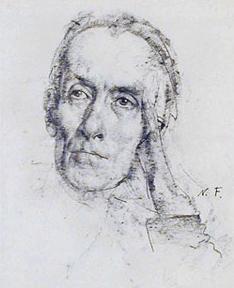
Nicolai Fechin, Self-Portrait
"Fine painting is simply a matter of putting the right colors in the right places on sheet." Nicolai Fechin
Key Facts About Nicolai Fechin
- Nicolai Fechin was born on 26 Nov 1881 in Kazan, Russia.
- He was introduced to fine art from a young age, learning how to cleave from his father and besides creating cartoon designs for the construction of altars.
- At the age of 13, he enrolled in the newly-opened Kazan Art School, a branch of the Royal University of Arts. Fechin ended upwardly marrying and having a child with the daughter of the Kazan Art School director.
- He was subsequently admitted to study at the Imperial Academy with artists similar Ilya Repin. I tin can certainly see similarities between the works of Repin and Fechin.
- His final painting whilst studying at the Majestic University won him the Prix de Rome, which allowed him to travel and paint through Europe.
- In 1910 he won gilt at the annual International Exhibition in Munich.
- He eventually returned to his home in Kazan to teach at the Kazan Art School, of which he eventually became the managing director.
- He passed abroad on 5 Oct 1955 at the historic period of 73 in Santa Monica, United States.
- The largest drove of his piece of work is at the Fechin Center in Kazan.
A Closer Look at Some of Nicolai Fechin'southward Paintings
Fechin's paintings are a sit-in of his academic training, with masterful use of drawing, value and composition. What makes his art unique is the way he combined his bookish mastery with painterly brushwork and a level of abstraction. He was clearly trying to push the boundaries of what is possible with paint and brush.
In his painting beneath, notice the dissimilarity of the delicate tones and details used for the subject'south face, confronting the painterly brushwork and abstraction for the residual of the painting. The subject's clothing almost blends in with the wall in the background.

Nicolai Fechin, Lady in Lilac, 1908
Fechin used painterly brushwork for the whole painting below, including the subject'due south face. The solid fundamentals of this painting allowed Fechin to exist more rough and expressive with his brushwork. Also, observe how in that location are ii strong value masses - the dark bottom half and the light top half, with a few night or colorful accents strategically positioned throughout the painting.
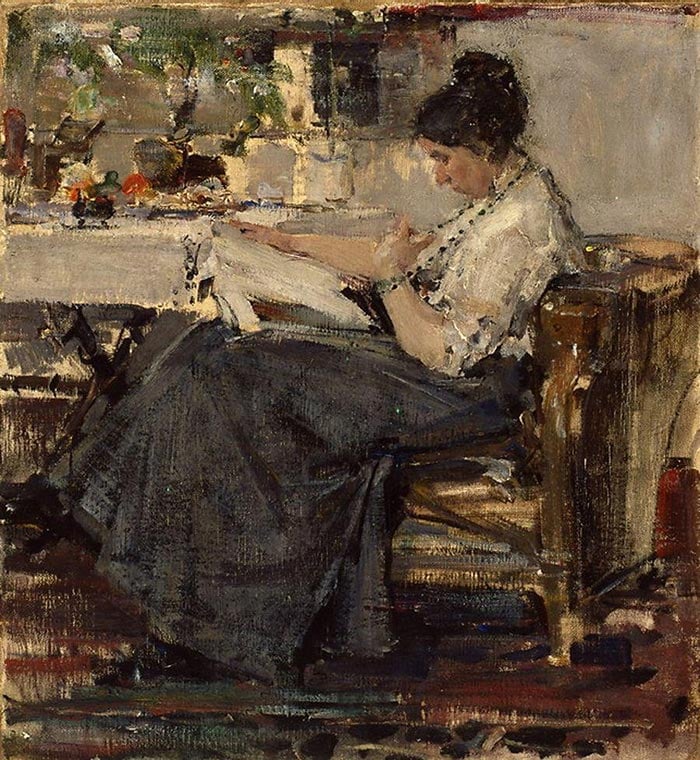
Nicolai Fechin, Portrait of N. V. Sapozhnikova, 1915
The level of detail and control used in the painting below is truly remarkable. The daughter solitary would have been a challenge to paint, allow alone the fruit on the table, the flower pots on the window shelf or the detailing of the tablecloth.
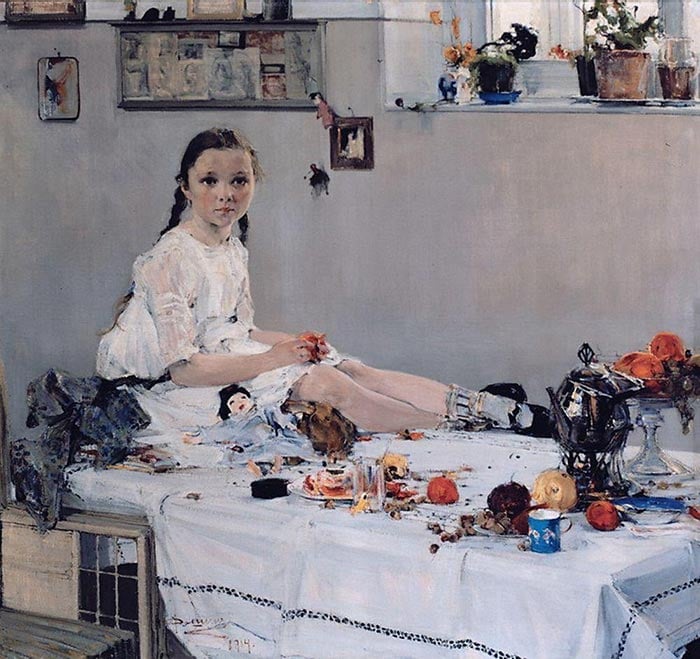
Nicolai Fechin, Portrait of Varya Adoratskaya, 1914
The painting beneath is in stark dissimilarity, with Fechin using abstraction, expressive brushwork and a cluttered composition.

Nicolai Fechin, Pouring, 1914
(If you want to learn more about colour, make sure to grab my free Color Theory Cheat Sheet).
Elegant Drawings
Here are some of Fechin's elegant drawings. Notice in item his powerful use of line.
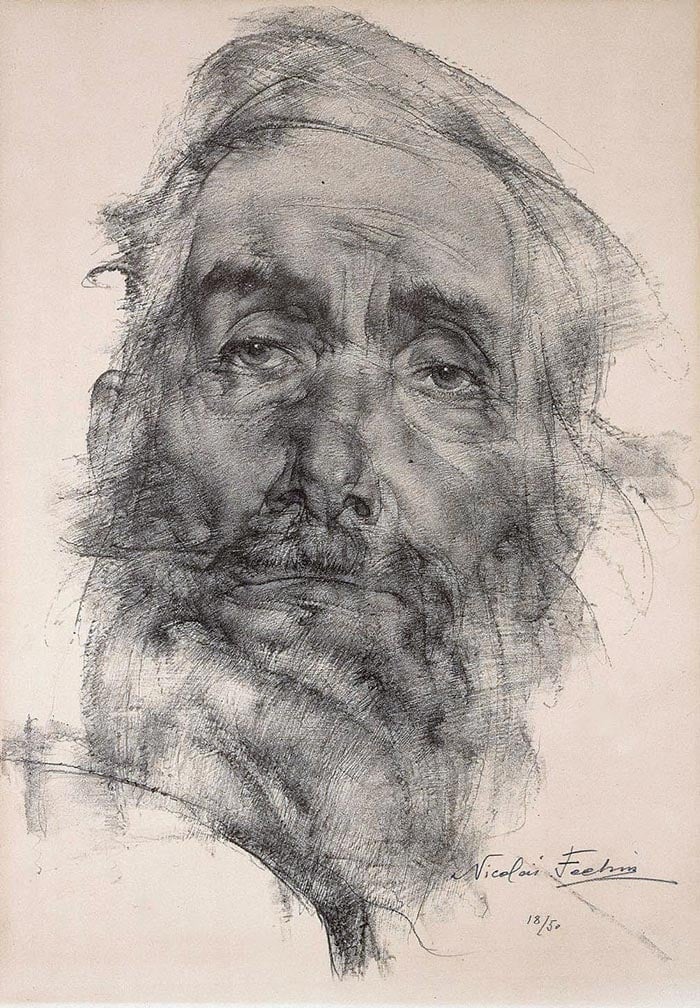
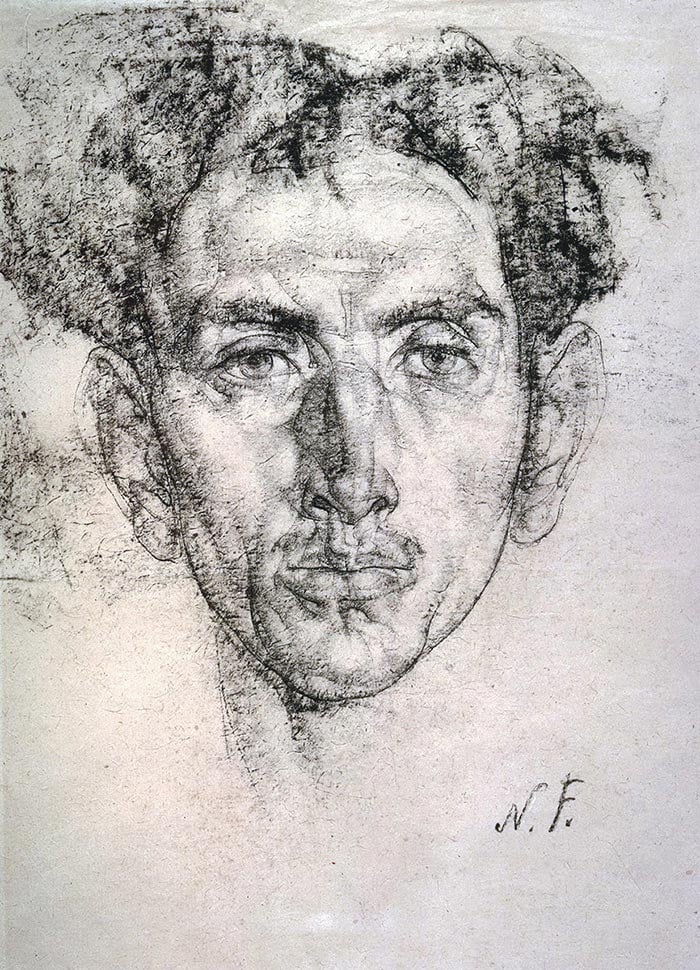
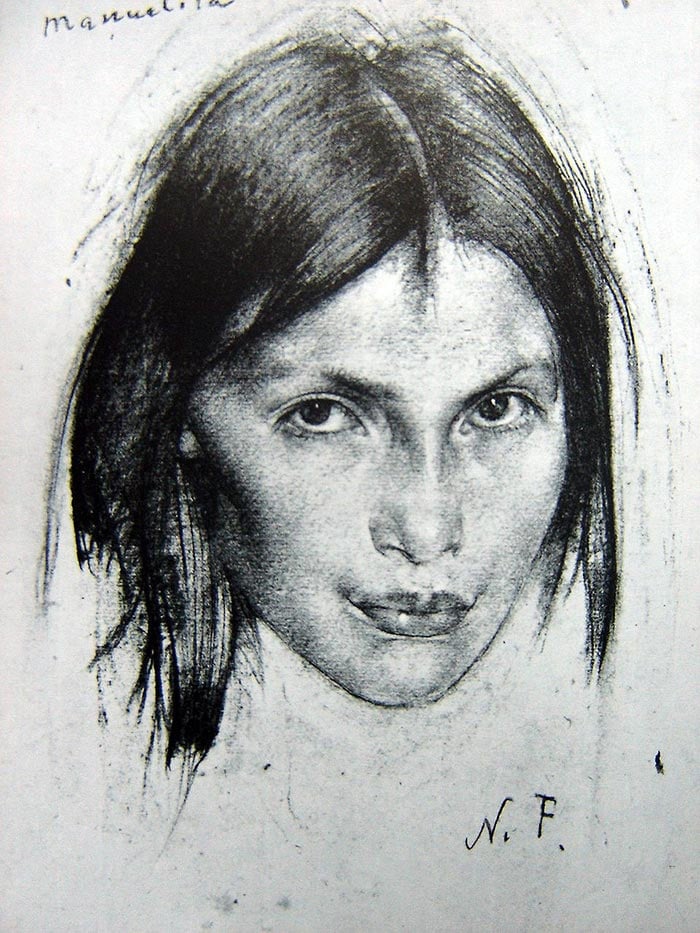

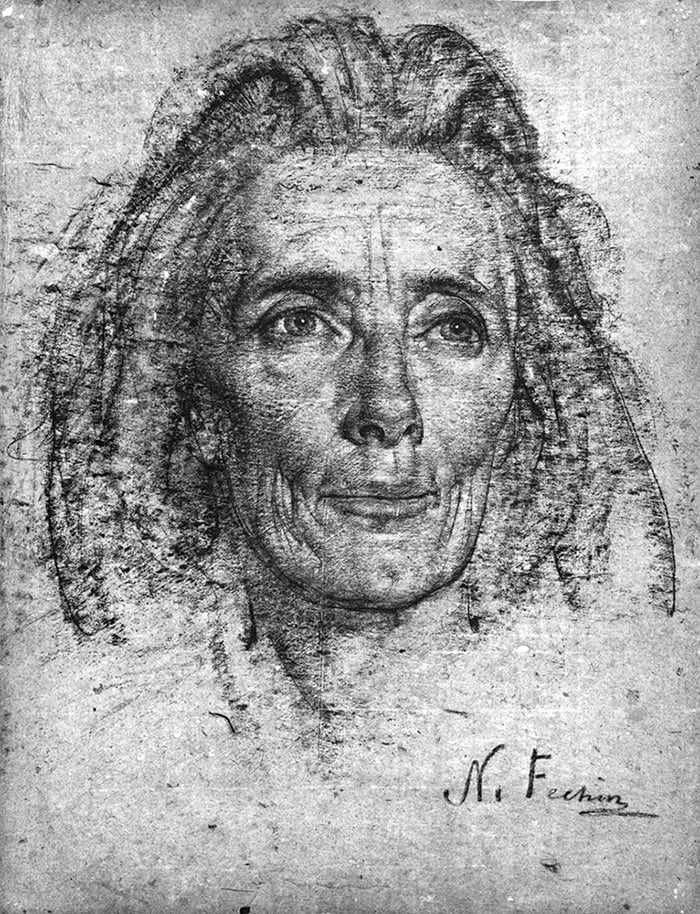
Nicolai Fechin Quotes
The following quotes provide some fantastic insight into Fechin's ideas and mindset about art. I propose you read each quote as there is a wealth of knowledge here.
On color...
"As a matter of fact an creative person has to deal with only three bones colors: red, blue, yellow (all the rest are combinations of these fundamental colors). Everyone knows this, but few pay attention to the fact. Thus the get-go step for the artist to learn to encounter these primary colors and to distinguish them separately ane from the other."
"To avoid murky results, it is necessary to learn how to use the three basic colors and to utilize them, layer upon layer, in such a way that the underlying color shows through the side by side application. For instance, one can use blue pigment, employ over it some red in such a mode that the blue and the cherry-red are seen simultaneously and thus produce the impression of a violet vibration. If, in the same careful style, 1 puts upon his first combination a yellow color, a complete harmonization is reached - the colors are not mixed, just congenital one upon the other, retaining the full intensity of their vibrations."
On technique, style and ideas...
"... a high degree of expertise in technique has always had, and always will accept, a predominant place in fine art. The subject, in itself, has value simply co-ordinate to the manner of the 24-hour interval. Tomorrow it volition be superseded by a new fashion or fad. With the passing of time, the subject loses much of its significant. But the fine execution of that field of study retains its value..."
"The appearance of a truly new thought in art is always valuable, but simply when it aims at fulfilling itself in an accomplished piece of work."
"The more than consummate his technique, the easier the creative person volition detect it to free himself from all dependence upon a subject. What he uses to make full his canvas with is not and so vital. What is vital is how he does it. It is sad if an creative person becomes a slave to the object he seeks to portray. The portrayed object must serve as zippo more than than an excuse to fill a sheet. But when the bailiwick passes through the filter of his artistic faculty does his work acquire value for an creative person..."
"As soon as an original idea is formed – what the creative person wants to portray and past what physical means – he must brainstorm to structure, to organize. A method for learning the creation of "form" lies in the creation process itself. In my opinion, creation of form cannot exist based on distribution of light and shadow alone, every bit low-cal is constantly changing and it is just an impression of course, only not form itself."
On learning fine art...
"No 1 can teach you how to paint and how to draw except you lot yourself. Y'all cannot larn how to paint by watching a well-trained main painting, until you lot yourself, accept learned how to paint with some agreement first. Only by the path of much do and experience can mature results be reached."
"...the construction of form remains central – of any form, be it natural or imaginary. The principle of construction remains the same, whatsoever the form. So the artist should begin by studying the construction of form."
"My way of drawing and painting can be taught but through straight visual perception and it is virtually impossible to describe it. An attitude toward painting and a few technical fundamentals can exist discussed, however - but always with a warning not to have my observations in an overly literal or rigidly gear up way..."
On procedure...
"The artist must never forget that he is dealing with the entire sheet, and not with whatsoever one section of it. Regardless of what he sets out to pigment, the problem remains i and the same. With his own artistic originality, he must fill in his canvas and make of it an organic whole. In that location must not be any particularly favored spot in the painting..."
On mediums...
"Too for myself, I do non like to use medium. This dissolves the paints too much. The pigments mix up together, do not retain their individual distinctness and thus again lose much of their fresh intensity."
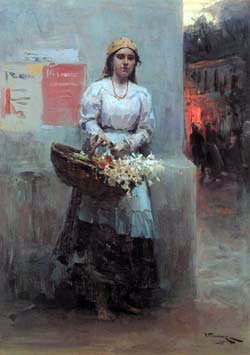
Nicolai Fechin, Flower Girl, 1908
(Y'all might as well be interested in my Painting Academy course. It will aid you sympathise and use colour more effectively in painting.)
Thanks for Reading!
Cheers for taking the time to read this post. I appreciate it! Feel costless to share with friends. If you lot want more than painting tips, check out my Painting Academy course.
Happy painting!

Dan Scott
Draw Paint University
Source: https://drawpaintacademy.com/nicolai-fechin/
0 Response to "Nicolai Fechin - Key Facts, Style Breakdown and Master Paintings"
Post a Comment